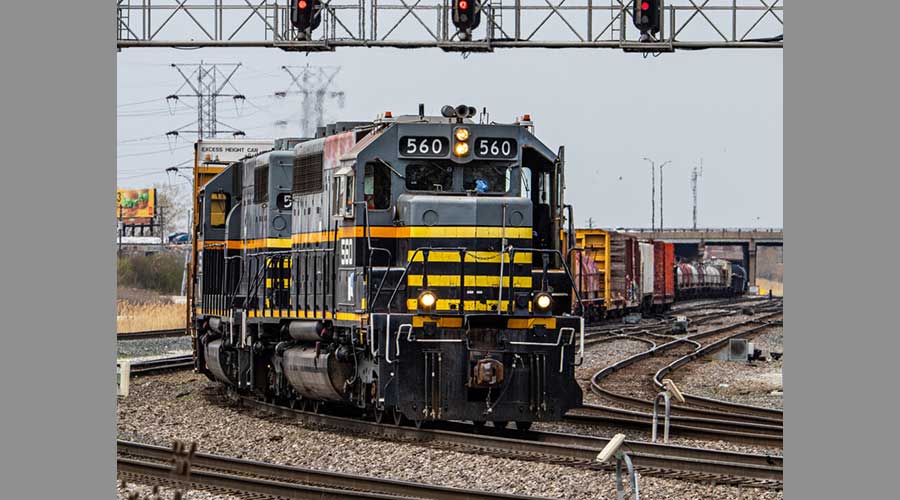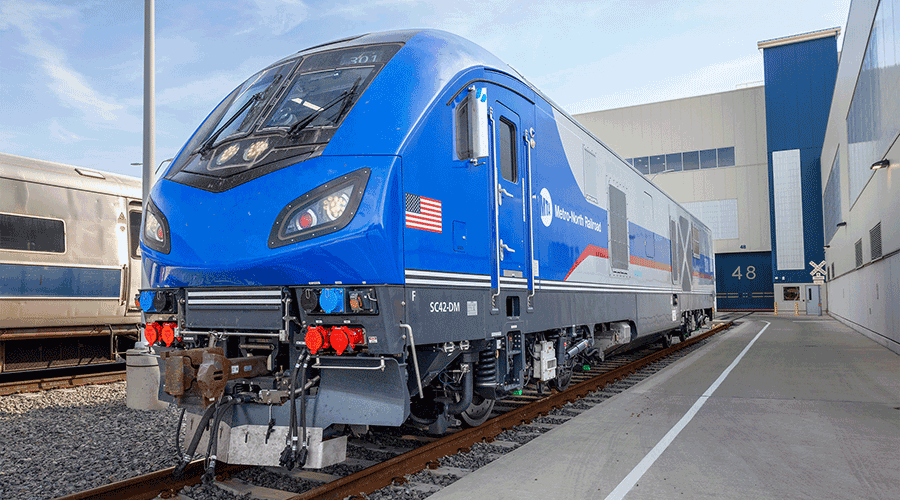Newsletter Sign Up
Stay updated on news, articles and information for the rail industry
Stay updated on news, articles and information for the rail industry
RAIL EMPLOYMENT & NOTICES
Rail News Home
Rail Industry Trends
Rail News: Rail Industry Trends
3/1/2013
Rail News: Rail Industry Trends
U.S. rail traffic continues to follow a familiar trend
advertisement
Traffic remained a mixed bag for U.S. railroads last week. For the period ending Feb. 23, they originated 278,059 carloads, down 1.2 percent, and 238,083 intermodal loads, up 11 percent compared with volumes from the same week last year, according to the Association of American Railroads. Total U.S. traffic rose 4.1 percent to 516,142 units.
Only four of 10 carload commodity groups posted increases, led by petroleum products at 66.4 percent. Grain volume tumbled 17.3 percent and metallic ores/metals traffic declined 10 percent.
Railroads are expecting continued weakness in agricultural products traffic through the first half given last year's drought, said Robert W. Baird & Co. Inc. analysts in their weekly "Rail Flash" report. Corn represents about half of grain carloads and corn yield fell to its lowest mark since 1995 as production declined 13 percent. they said.
"Recently released USDA long-term agricultural projections have early estimates for second-half key crop yields (corn, wheat, soybeans) improving 24 percent year over year, [which is] better than prior projections for 19 percent growth, supported by better corn yield expectations," Baird analysts said.
For the week ending Feb. 23, Canadian railroads reported 77,789 carloads, up 1.3 percent, and 51,389 intermodal units, up 12.6 percent year over year. Mexican railroads' weekly carloads climbed 12.4 percent to 16,475 units and intermodal volume increased 12.3 percent to 10,669 units.
Through 2013's first eight weeks, 13 reporting U.S., Canadian and Mexican railroads handled 2,894,321 carloads, down 2.8 percent, and 2,383,811 containers and trailers, up 6.8 percent compared with the same 2012 period.
Only four of 10 carload commodity groups posted increases, led by petroleum products at 66.4 percent. Grain volume tumbled 17.3 percent and metallic ores/metals traffic declined 10 percent.
Railroads are expecting continued weakness in agricultural products traffic through the first half given last year's drought, said Robert W. Baird & Co. Inc. analysts in their weekly "Rail Flash" report. Corn represents about half of grain carloads and corn yield fell to its lowest mark since 1995 as production declined 13 percent. they said.
"Recently released USDA long-term agricultural projections have early estimates for second-half key crop yields (corn, wheat, soybeans) improving 24 percent year over year, [which is] better than prior projections for 19 percent growth, supported by better corn yield expectations," Baird analysts said.
For the week ending Feb. 23, Canadian railroads reported 77,789 carloads, up 1.3 percent, and 51,389 intermodal units, up 12.6 percent year over year. Mexican railroads' weekly carloads climbed 12.4 percent to 16,475 units and intermodal volume increased 12.3 percent to 10,669 units.
Through 2013's first eight weeks, 13 reporting U.S., Canadian and Mexican railroads handled 2,894,321 carloads, down 2.8 percent, and 2,383,811 containers and trailers, up 6.8 percent compared with the same 2012 period.


 2025 MOW Spending Report: Passenger-rail programs
2025 MOW Spending Report: Passenger-rail programs
 Gardner steps down as Amtrak CEO
Gardner steps down as Amtrak CEO
 Guest comment: Oliver Wyman’s David Hunt
Guest comment: Oliver Wyman’s David Hunt
 Women of Influence in Rail eBook
Women of Influence in Rail eBook
 railPrime
railPrime







